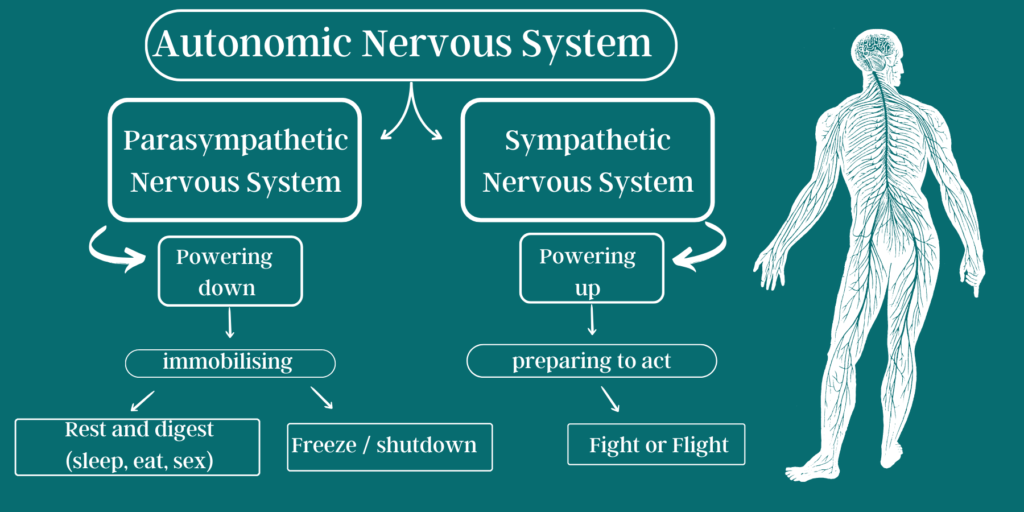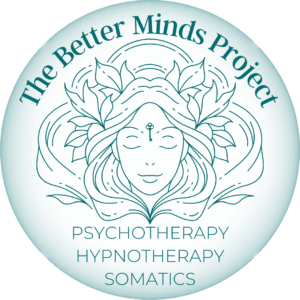
What exactly is Somatic Therapy?
…and how you can use somatic techniques to manage your own mental wellbeing.

The word 'Somatic' comes from the the Greek word “sōmatikos”, which means “of the body”.
Somatic therapy is all about the body. It focuses on how the body responds to, stores, and expresses, trauma and stress. It is a broad, non-prescriptive term, for which there are various applications in the field of mental health.
From a psychotherapy perspective, it’s a really useful tool to approach the healing and repair of mental health issues, because it allows the therapist to look at these issues from a holistic perspective. It means that we can address the mental, emotional and physical changes that occur in our bodies when our mental health takes a dive. We can incorporate somatic therapy into our work to recalibrate the whole mind-body ecosystem so that it operates in a healthy, more constructive way.
The physiology of stress
To understand why somatic therapy is so useful, it’s useful to know what happens in our brains and our bodies during times of stress.
The initial stress response starts in the brain. When our stress levels peak, whether due to a singular event or a drip feed of low level stressors over time, the amygdala – the region of our brains responsible for keeping us safe in a crisis – triggers a response in the brain and body that initiates survival mode.
At that point in time, the neocortex of the brain relinquishes control of our thought processes, and the primitive centre of the brain takes over. The hypothalamus – the area of the brain that regulates chemical responses in body and mind, releases stress hormones which flood the nervous system.
what is exactly is somatic therapy

what exactly is somatic therapy?
The autonomic nervous system
The autonomic nervous system (ANS) is responsible for the unconscious processes which are vital for survival, homeostasis, and adaptation. The ANS splits into two parts, which trigger different outcomes in our bodies. When triggered by the chemical ‘survival mode’ signals sent from the brain, it assesses safety cues, and initiates a survival response based on those cues.
The Sympathetic Nervous System initiates a ‘powering up’ response which prepares our bodies so that we are ready to spring into action. When this part of the ANS is triggered, our hearts beat faster, blood supply is redirected to the muscles, and we become ready to either fight or flee.
The Parasympathetic nervous system does the opposite – it allows our bodies to ‘power down’ and immobilise. This part of our ANS allows us to ‘rest and digest’ so that we can eat, sleep, and have sex. But in the context of a survival mode response, it triggers us to immobilise. This ‘freeze’ mode is a fairly primal fear response, and can actually slow physiological systems down so that we can play dead.
Freeze Mode
The concept of freeze mode can seem fairly flawed – after all, surely, if you are in imminent danger you should either defend yourself, or get as far away as possible from the source of danger? Freeze mode is pretty much your body’s cloaking device. When your ANS picks up on cues that you will be unable to fight off, or escape from the source of peril, it needs a plan B.
If you’ve ever seen a cat catch a live mouse, you may have seen this in action. The cat has the mouse in it’s jaws and the mouse looks dead. The cat drops the mouse on the floor in front of it, and it lies there, limp and lifeless. But if the cat moves away from the mouse, after a few seconds, the mouse jumps up and runs away.
That is the purpose of ‘freeze’ mode. It’s a last ditch attempt to try and not get injured by a predator, in the hopes of escaping danger once it’s not perceived as being an escape risk.
The Vagus Nerve
There are various structures within our ANS which support these different subregions. These structures within the nervous system are made up of layers, which we have evolved as we have evolved into humans. One of the key nerve structures in humans, is the vagus nerve.
The vagus nerve is the longest nerve in the autonomic nervous system, and it interfaces the parasympathetic nervous system. It’s important, because it manages the shifts between our ability to be restful and calm (rest and digest mode) and initiation of sympathetic stress responses, which can trigger immobilisation (freeze mode).
Polyvagal Theory and trauma
When it comes to somatic therapy, understanding the role of the vagus nerve and how it can impact our mental and physical health, is really helpful. The vagus nerve is what allows us to recognise when we are safe, so that we can let our guard down and engage in behaviours that are vital for us as a species and as individuals. Namely, being able to eat, sleep, and connect with others.
In order to be able to switch between survival mode and rest and digest mode, we need to be able to initiate a vagal brake. This is the mechanism in our ANS that allows us to do so.
But when we have been exposed to adverse high-stress situations, we lose the ability to be able to initiate that brake. What this means is that our physiology changes – we lose the ability to feel safety and connection. Our physiology remains on red alert, we cannot fully relax.
In terms of mental health, this is extremely detrimental. Our brains and our bodies interact with each other in a two way system. Just as our brains send messages to our organs and muscles. And our bodies send messages of stress , pain, satiation and pleasure etc back to the brain. So when your body’s ability to feel safe and relaxed is faulty, it will continuously signal the brain that we need to stay in survival mode. Our stress levels will increase, and makes us susceptible to feelings of anger, anxiety, and depression.
Examples of somatic exercises
Somatic exercises come in all shapes and sizes. They involve focusing on the mind-body connection in various ways.
I tend to concentrate on breathing exercises to stimulate rest and digest mode. I also teach grounding exercises, which encourage focus on the senses, along with self-massage and movement exercises – including simple yoga poses. These stimulate the vagus nerve, encouraging improved vagal tone, and helping repair any damage caused by trauma or chronic stress.
Give it a whirl
If you think that perhaps you’re storing trauma in your body, or you feel the physical sensations of stress and tension in your muscles or your inability to feel relaxed and safe, you might like to try a couple of somatic exercises for yourself.
You could start by trying out some breathwork techniques for self-soothing. Find somewhere you can sit quietly for a few minutes. Begin breathing in for a count of 4, hold your full breath for a count of 4, breath out for a count of 4, and then hold on empty for a count of 4. Do this for 5 or 6 rounds of breath. You will notice that your heart rate has slowed, and your muscles have softened.
If you’re looking to stimulate your vagus nerve, you can try a gentle facial massage of the vagal nerve endings. Take the index and middle fingers of both hands, and place them on your temples on either side of your forehead. Keep the two fingers together, and make small circular motions on your temples, then slowly move your two fingers downwards along the hairline continuing the circular movements until you reach your jawline. Next, move your fingers to behind your ears and continue to massage in small circular motions as you move down the sides of your neck until you reach your collar bone.
You’ll find this sensation super-relaxing, and over time this exercise can help strengthen your vagus nerve. Enabling you to feel calm, relax, safe and connected with the people around you and your immediate environment.
One last thing...
If you’re struggling with your mental health as a result of chronic stress or trauma, get in touch. I’m an experienced psychotherapist and hypnotherapist, and I help people with this sort of stuff all the time. I work online as well as in person (you can find out more about me here, and info about booking and prices here) if you’d like to work with me.
And if you’re just looking for something you can do by yourself, check out my range of hypnotherapy relaxation tracks, some of which are designed specifically for helping manage stress and reducing trauma responses. You can download them in seconds, and they are incredibly helpful for helping you de-stress and reset your brain so it’s ready for sleep.
You can also pick up more tips and info on how to successfully hack your mental health on my socials, just click the links below.
what exactly is somatic therapy?

what exactly is somatic therapy?